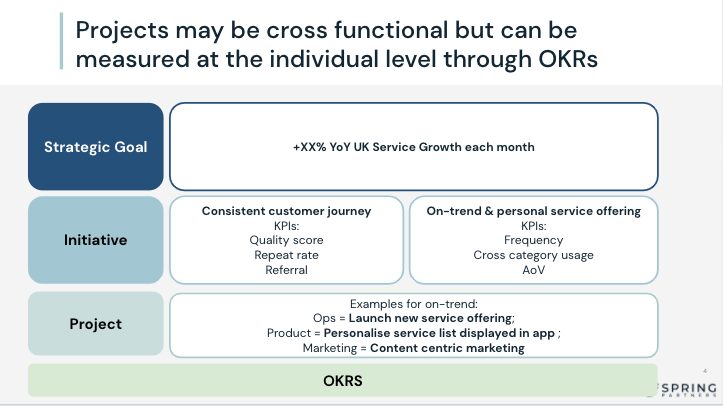The nut to crack: How effective business planning can improve execution in 4 simple steps
- Home
- Uncategorized
- The nut to crack
The most common challenge we see scaleups face is not in defining their strategy but in actually delivering it. They hire top quartile talent, who work hard and yet their efforts do not result in achieving the high aspirations of the business in the time frames investors want. The problem may lie in not properly aligning and orientating the team around the strategy or, in getting the team to effectively execute against the strategy, or in some cases it may be both.
Often this can be as a result of an org structure that’s not fit for purpose or a lack of clear accountabilities throughout the organisations but in many instances it can be a lack of simple business planning and organisation-wide communication. For example, whilst the Exec might agree on the strategy they might not have taken all of the necessary actions needed to distil that down with the team into actionable priorities and projects for individuals with clear measurable goals and timelines for the year. Without this, objectives and operational goals can change from quarter to quarter, leaving teams confused and burnt out and individual functions working in isolation. All this results in the whole invariably being significantly less than the sum of its parts.
Specifically translating a well thought through business strategy into goals, projects, OKRs and BAU tasks for the entire organisation sounds a simple task but is often rushed and unstructured making it hard for Execs to manage business performance against the strategy and resulting in (often a highly capable) team rushing around like “headless chickens”. It sounds straight forward, but you’d be surprised how far some startups and scaleups get without having these simple processes in place and it’s often the simplest process that can have the biggest impact on a business’ ability to deliver.
To get started, we’ve broken this process down into 4 simple steps:
- Build quarterly plans that ensure both BAU activities and strategic goals are in line with the company’s overall strategic objectives. Often the first part of this is clearly articulating the strategy to all levels of the organisation and ensuring that all BAU activities are delivering against the chosen priorities, at all levels of the organisation.

- Define the set of initiatives that will deliver against these strategic goals. Strategic goals can be, and often are, cross-functional and will be delivered by various teams through a clear set of initiatives that will likely vary by quarter, and will require effective cross team collaboration.

- Identify the priority projects within each initiative every quarter using simple impact / effort frameworks, to ensure the team are mobilised most effectively in delivering against the overall strategic goals. To drive engagement across the organisation and to ensure that everyone truly understands the goals they are trying to achieve projects should be proposed and planned by each individual team member, who then presents to their manager for decision making.

- Measure the delivery of these projects though OKRs at every level of the organisation, and clearly show team members how their OKRs and projects contribute towards the overall strategic goal, connecting the team to the overall business mission and strategy and empowering them to have real impact.

Similar case studies

Get in touch
Learn more about how Spring can help you achieve explosive growth
